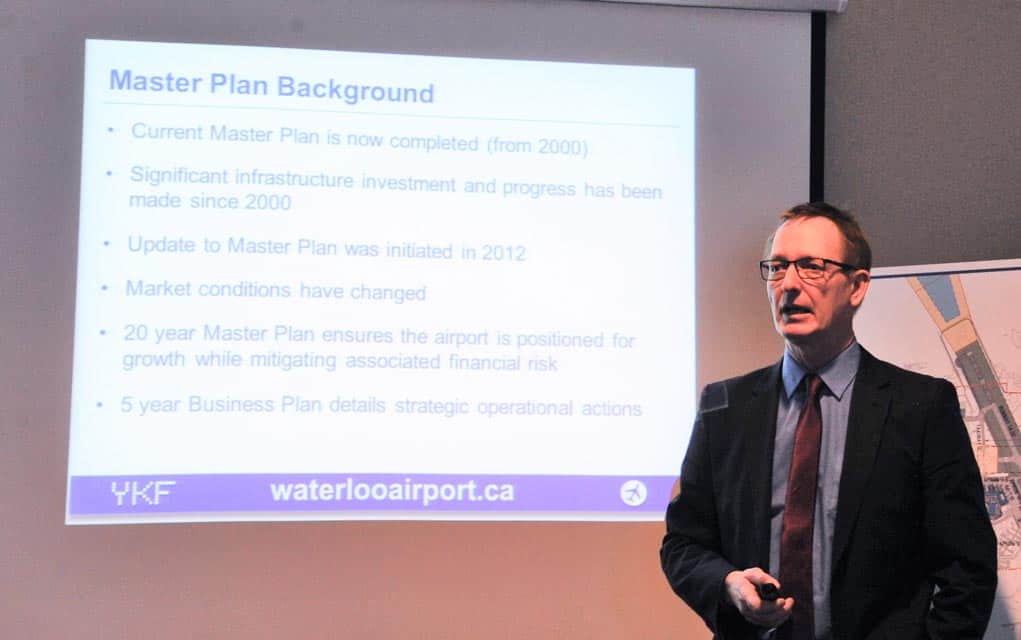The Region of Waterloo International Airport is looking to fill the gaps in air service for local passengers, and expand under their newly completed airport master plan.
Despite the airport losing two air carriers in the last year, American Airlines and Nolinor, and continuing to hemorrhage money, the region is moving ahead with the 2017 master plan process, outlining future opportunities for expansion for the regional flight hub.
Released on Mar. 31, the master plan outlines different milestones predicted for growth, cost of future expansions, funding plans and marketing targets.
Rod Regier, commissioner of planning, development and legislative services for the Region of Waterloo outlined the region’s thinking behind the new plan.
“Our region is continuing to grow and our business community and our travelling public all have been asking for increased air service. We know that this region within 35 km of the airport generates about 2.5 million passengers per year, of which, last year, we served about 127,000, so we know that our communities are travelling,” he said of the untapped market surrounding the airport. “They want to have access to more destinations and they will drive to other airports, but the simple fact that we at YKF have an opportunity to serve our community much better if we can pull together the business development side and the capital structure to do that.”
Chris Wood, general manager of the Region of Waterloo International Airport, says the days of “build it and they will come” are behind us.
“Regional council tasked us with a ‘just in time’ planning and growth strategy, so we are really going to look at doing some planning and moving on when we hit certain levels of passenger numbers to make those investments in the airport, to capture some of that opportunity. It is all based on passenger numbers and it is really around the terminal building,” he said. “The airport that is currently built, the runways can support way more passenger traffic than we currently have and more than what this plan contemplates.”
The plans for expansion include runways, but according to Wood, are focused on the terminal and passenger capacity.
“The stages of development are implemented when criteria are met,” he said.
The first order of business should regional council approve the master plan on Apr. 12, is the planning stage, which includes studies on capacity expansion, investigating funding partnerships, conceptual designs for a terminal expansion to 500,000 passengers per year and to look closely at a connection to the future Breslau GO station. Stage I is expected to cost the region $1,692,800.
Should passenger numbers reach 250,000 from today’s 127,000, that is when runway expansions would be implemented, and construction on an expanded terminal would begin, costing the region an estimated $37 million.
In Stage III, if or when the airport reaches half a million annual passengers, the plan would be to start construction on Shantz Station Road, expand the runway to the road, and construct a new terminal building for a million passengers, and design a terminal building for two million passengers. Stage III is estimated to cost the region $58.6 million in today’s dollars.









